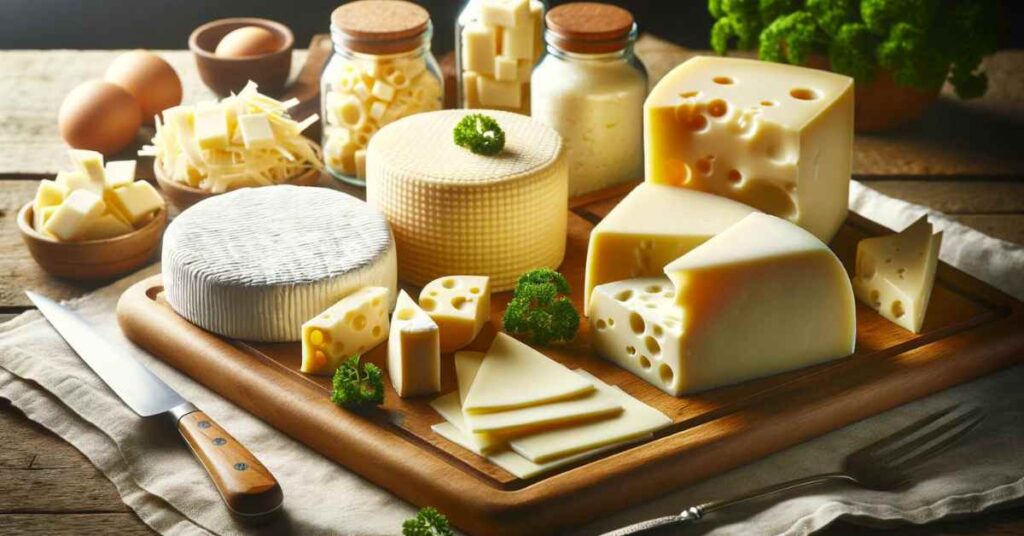White American cheese has been a favorite in American households for decades. Its creamy texture, mild flavor, and versatility in various dishes have made it a staple in kitchens across the country. Let’s take a deeper look into the origin, production process, nutritional profile, culinary uses, and the future trends surrounding white American cheese.
A Brief History of White American Cheese
Origins and Cultural Significance
White American cheese emerged in the late 19th century when processed cheese became more popular. People appreciated its consistent texture and longer shelf life, which fit perfectly with the growing food industry. Throughout the 20th century, white American cheese gained cultural significance, appearing in classic American dishes like grilled cheese sandwiches and cheeseburgers.
Development and Adaptation
Initially, processed cheese was created to address the need for a stable and durable product that could be transported easily. As the American food industry expanded, white American cheese adapted to meet evolving consumer preferences. This adaptation has kept it relevant in a changing food landscape.
How White American Cheese Is Made
Key Ingredients and Formulation
Manufacturers make white American cheese using a combination of natural cheese, emulsifiers, and other additives. Typically, they use cheddar, Colby, or Monterey Jack as the base, with emulsifying salts added to maintain a smooth texture. The result is a cheese that melts evenly and has a consistent flavor.
Production Techniques
The production process involves heating and blending the cheese base with emulsifiers to create a pliable product. Manufacturers then pour the mixture into molds or slice it into blocks for packaging. This approach ensures a consistent texture, contributing to the cheese’s popularity.
Nutritional Benefits of White American Cheese
Caloric Content and Nutrients
White American cheese is relatively moderate in calories, with about 70-100 calories per slice. This low-calorie content makes it suitable for lighter meals. The cheese also provides a source of protein, calcium, and essential vitamins like vitamin D, which are important for bone health and muscle growth.
Potential Health Considerations
Despite its benefits, white American cheese contains emulsifiers and additives, which can be a concern for health-conscious consumers. Manufacturers are addressing these concerns by reducing artificial ingredients and focusing on natural products. These efforts aim to create a healthier version of white American cheese.
Culinary Uses for White American Cheese
Sandwiches and Burgers
White American cheese shines in classic sandwiches like grilled cheese and as a topping for burgers. Its smooth melting properties make it ideal for these dishes, providing a creamy layer that enhances the overall flavor.
Dips, Sauces, and More
The versatility of white American cheese extends to dips and sauces. It melts smoothly, making it perfect for nachos and cheese-based sauces. Many chefs use it to create creamy dips that pair well with various snacks and appetizers.
Creative Recipes with White American Cheese’s
White American cheese’s is not limited to traditional dishes. You can use it in unique recipes like cheese-stuffed pretzels or as a topping for casseroles. Its versatility allows you to experiment with new recipes and flavors, giving you endless culinary possibilities.

The Future of White American Cheese’s
Trends and Innovations
The cheese’s industry constantly evolves, and white American cheese’s is part of that change. Manufacturers are focusing on reducing sodium levels and eliminating artificial additives. Additionally, plant-based white American cheese’s is gaining popularity, providing an option for those who follow vegan diets or have lactose intolerance.
Health and Sustainability
The growing emphasis on health and sustainability has led manufacturers to adopt more eco-friendly practices. Companies are exploring sustainable farming methods and energy-efficient production to minimize environmental impact. This trend reflects a broader shift toward healthier and more environmentally conscious food production.
Conclusion
White American cheese’s holds a special place in American cuisine due to its creamy texture and versatility. As the industry shifts toward healthier and more sustainable practices, this cheese continues to evolve. Whether you prefer classic dishes or innovative plant-based versions, white American cheese’s will likely remain a popular choice for years to come.
Frequently Asked Questions
1. What is white America cheese’s made from? White American cheese’s combines natural cheese’s, emulsifiers, and other additives to create a consistent texture. Manufacturers often use cheddar, Colby, or Monterey Jack with additional ingredients for stability and flavor.
2. Is white American cheese’s healthier than yellow American cheese’s? White and yellow American cheese’s share similar nutritional profiles. Their healthiness depends on specific formulations and ingredients. To determine which is healthier, check the nutritional information on the package for details on calories, fat, and sodium.
3. Can I use white American cheese’s as a substitute for other cheeses? White American cheese’s can often replace other cheeses in recipes due to its smooth melting properties. You can use it in sandwiches, dips, sauces, or any dish that requires a creamy cheese texture.
4. Is white American cheese’s suitable for vegetarians? Many white American cheeses are suitable for vegetarians, but some may contain animal-based rennet. If you follow a vegetarian diet, check the label to ensure the cheese doesn’t contain animal-derived ingredients.
5. How should I store white American cheese’s? To keep white American cheese’s fresh, store it in an airtight container in the refrigerator. Proper storage prevents it from drying out and maintains its creamy texture. If you plan to store it for an extended period, consider using wax paper or plastic wrap for added protection.

